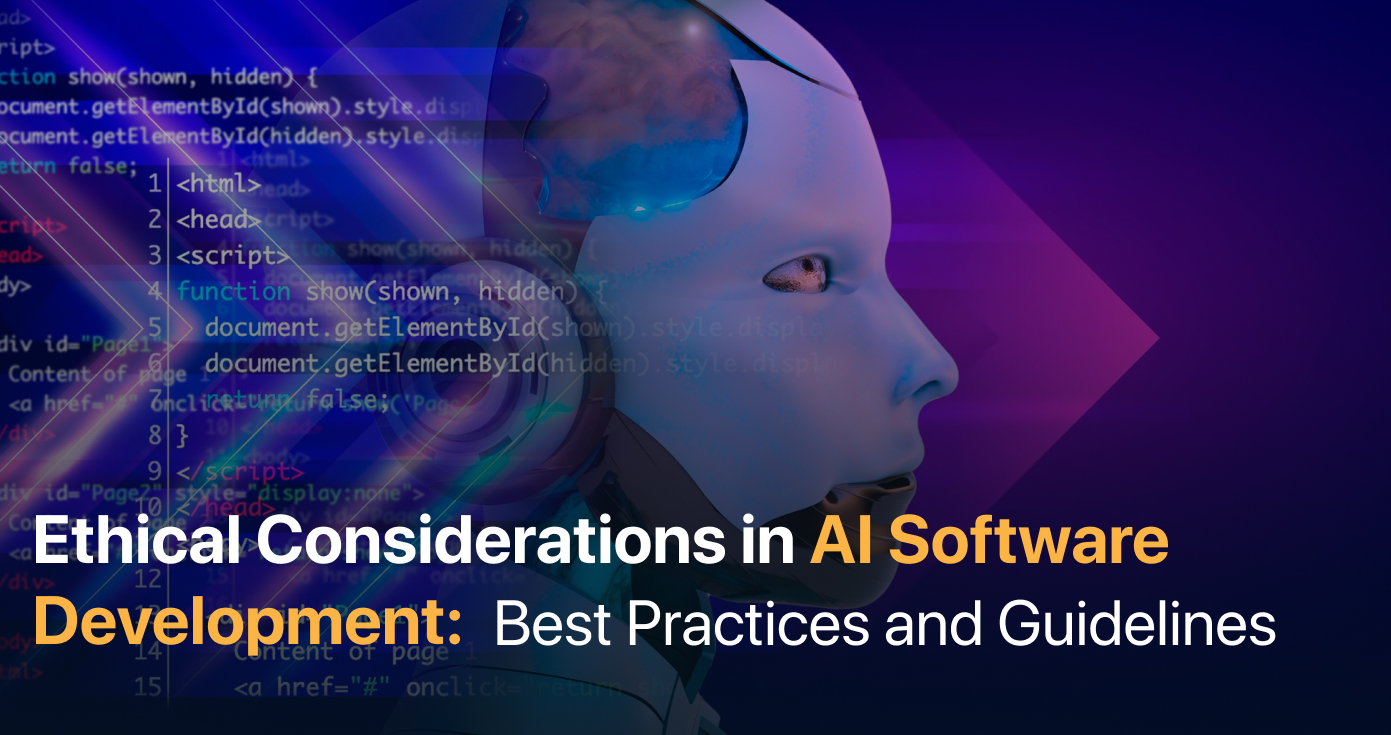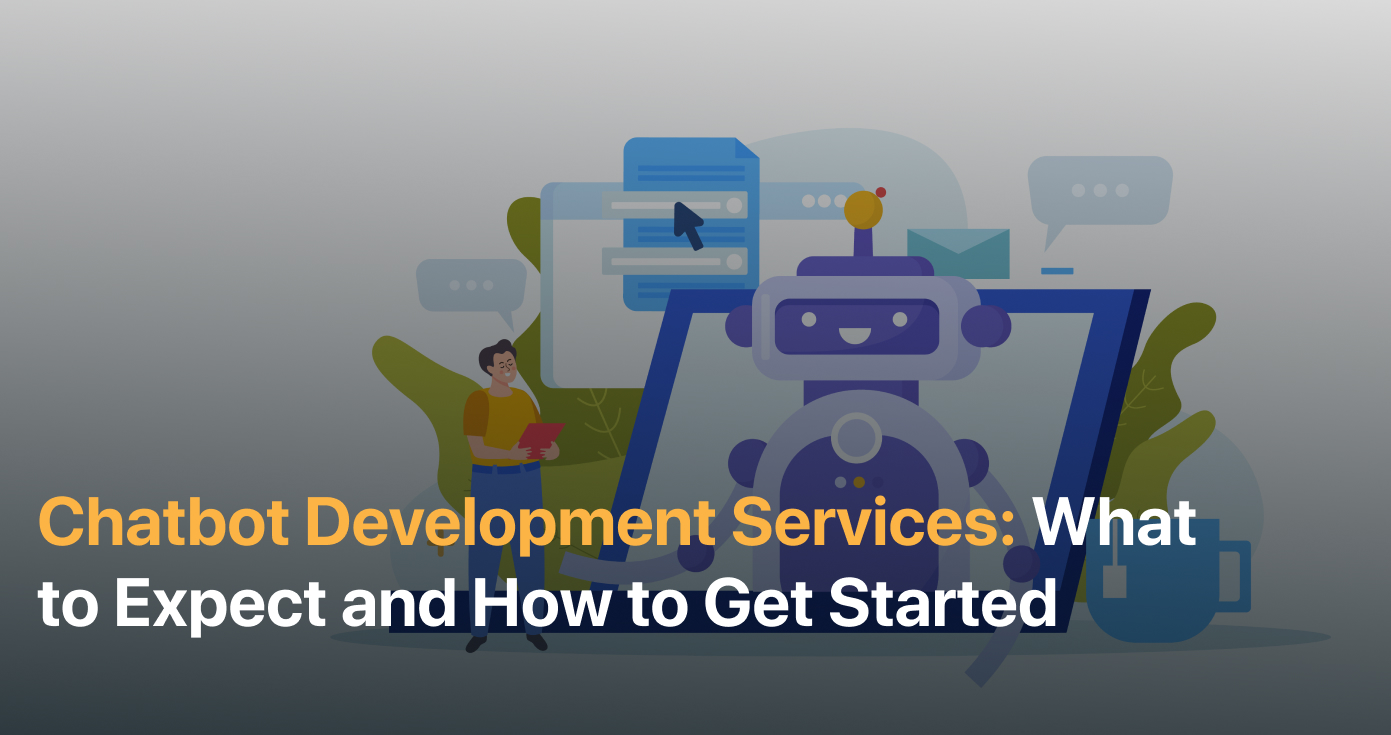
Ethical Considerations in AI Software Development: Best Practices and Guidelines
The influence of technology in the current and future worlds has probably never reached such heights as it has with the integration of artificial intelligence (AI). With AI becoming increasingly ubiquitous across various aspects of our lives, ranging from the medical to the financial, it remains pertinent for its development to adhere to ethical principles.
Thanks to ethical AI guidelines and responsible management principles, AI developers are paving their way in AI development best practices. It provides an understanding of the basic ethical principles and the dynamic frameworks that are used in the ethical analysis of AI software development with reference to how the implementation of the guidelines is influencing the future of technologies.
10 Key Ethical AI Guidelines:
Here’s a description of ethical AI considerations in software development in a concise, point-by-point format:
1. Transparency:
- It is necessary to make sure that AI systems are accurate about their capabilities and possibilities, as well as the approaches used for making decisions.
- Discuss in simple terms how the AI algorithms or the specific tools being used work with the stakeholders.
2. Fairness:
- Semi-supervised learning: reduce bias, which could contribute to the discrimination of the AI model against users with unruly attributes such as color, gender, or wealth status.
- Applying fairness assessment and measurement rigorously from the coding phase up to the testing phase.
3. Privacy:
- Ensure donors are protected by limiting the amount of information they gather, securing the storage of the gathered data, and gaining consent to the use of the collected information.
- Practice stringent techniques for eliminating the identities of specific individuals in processed data.
4. Accountability:
- Introduce norms for apportioning causal responsibility behind AI choices and operations.
- Even in such situations, provide ways of seeking redress, compensation, or corrections in the event of adverse outcomes.
5. Robustness and Safety:
- Build AI systems that are immune to one or multiple attacks, one or multiple missteps, or any plain screw-ups.
- Combine features or characteristics to mitigate risks that may pose threats to users or society in general.
6. Human-Centered Design:
- Several papers encourage the protection of human rights and well-being when incorporating AI systems into society.
- Adopt the concept of ethical participation and incorporate ethicists as well as the affected communities in the decision-making processes.
7. Regulatory Compliance:
- Comply with the specific laws and regulations in relation to AI development, including data protection laws as pointed out by GDPR and others, if there are any industry-specific standards.
- At a minimum, keep up to date with new, industry-specific protocols and modify processes accordingly.
8. Continuous monitoring and auditing:
- Conduct surveillance on AI post-implementation so that any ethical pitfalls that are likely to appear after implementation are corrected.
- Carry out annual or periodic independent checks to assess the level of compliance with ethical standards and policies and any areas of concern.
9. Education and Awareness:
- Raising awareness, introducing ethical principles, and addressing developers, stakeholders, and the community to promote the creation of artificial intelligence that is both effective and morally correct.
- Increase public awareness of the social consequences of AI technologies and the importance of ethical literacy.
10. Ethical Leadership:
- Exemplify ethical management by giving ethical aspects paramount responsibility in policy making, decision-making, and organizational culture at large.
- Call for collective actions on the part of all players in the industry to improve the ethical face of artificial intelligence around the world.
AI development Best Practices
Here are some AI development best practices and guidelines presented in a bullet-point format:
1. Data Quality and Preparation:
- Standardize the inputs used for training AI models by guaranteeing that the databases fed into the system are correct, pertinent, and a good sample of the use intended for the AI.
- Data manipulation and cleaning are necessary to eliminate any form of bias, noise, or unimportant information that will impact the trained model.
2. Model Selection and Evaluation:
- Select the proper algorithm and model according to the task or the data resources available during training.
- When measuring model success, choose metrics that are less sensitive and also discuss accuracy, precision, recall, and fairness.
3. Ethical and responsible AI:
- Ensure the incorporation of ethics in the development and use of the artificial intelligence system and adhere to the general principles of transparency, fairness, and privacy.
- Ensure that there is a consistent response regarding the proportion of people of color in your organization or department.
4. Iterative Development and Testing:
- Some of the best practices that have emerged from implementing AI solutions include the need to adopt iteration cycles as well as feedback.
- Evaluate AI models exhaustively by applying the models to multiple datasets and various scenarios to understand their strengths and weaknesses.
5. Scalability and Efficiency:
- Ensure that the development of the AI systems includes scalability to accommodate the rising volumes of data and users.
- Make a few modifications to the algorithms and the encompassing structure to enhance efficiency in processing and deployment.
6. Interpretability and explainability:
- It is better to aim to train AI models that are explainable, and this is especially important when implementing self-learning AI inference systems in domains that are sensitive, such as health or finance.
- Common ways to improve interpretability include visualization of models, techniques of feature importance, and surrogate models.
7. Collaboration and knowledge sharing:
- Optimize cooperation between individuals from different fields, such as data science staff, subject matter specialists, and consumers.
- Create learning opportunities within the organization for AI and applicable fields and external exposures through conferences, papers, and open-source contributions.
8. Security and Privacy:
- Promote and ensure adequate security measures for AI models and data to be inaccessible, altered, or breached.
- Users’ privacy rights should be respected through compliance with data protection policies and using structural security measures such as encryption and anonymity.
9. Monitoring and Maintenance:
- Develop assessment schemes that will allow you to regularly monitor how AI models are performing and if they are experiencing unusual drops or variations.
- Being proactive in AI implies that individuals should set up a routine for the upgrade and maintenance of AI systems to accommodate new data and respond to the dynamic environment.
10. User-Centric Design:
- First, AI is developed to enhance the user experience; second, it is made as simple to use as possible; and third, it maintains the logic of the users’ behavior.
- Implement user and stakeholder feedback mechanisms to ensure that AI solutions developed are fine-tuned to meet specific usage hitches.
These practices and guidelines can assist individuals, organizations, and institutions to have standard, ethical, and effective routes to use AI to solve different problems in different sectors.
Conclusion
All in all, if anyone is drawn to hypothesize the future of AI technology, it is equally important to consider its unparalleled opportunities enumerated with equal concern for its potential ethical dilemmas. Thus, as developers can witness this environment, ethical AI guidelines and the general concept of responsible AI turn into not just a precautionary measure but also a moral imperative.





